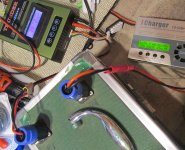Jonathan in Hiram
1 kW
- Joined
- Oct 6, 2009
- Messages
- 446
John in CR said:Repeated connecting/disconnecting combined with "connectors were a little bit dicey".
Please change the threat title. We should never combine lipo with the other word, because is is counterproductive for the cause since the public has an inaccurate impression of the overall risk with lithium batteries. Instead let's borrow a quote from Elon Musk regarding the explosion when trying to land a SpaceX rocket, and always refer to these events as "rapid unscheduled disassembly" of a lipo battery pack.
In fact, with the forum software that deals with cursing, can't the forum do that automatically for every instance of "lipo fire" or "battery fire"?
Ah, bulshytt...
http://www.urbandictionary.com/define.php?term=Bulshytt
Bulshytt
Technical and clinical term denoting speech (typically but not necessarily commercial or political) that employs euphemism, convenient vagueness, numbing repetition, and other such rhetorical subterfuges to create the impression that something has been said. The word, not to be confused with the broader term, "bullshit," was coined by author Neal Stephenson in his speculative-fiction novel Anathem.
According to Stephenson, people who use this type of rhetoric are "more prone than anyone else to taking offense (or pretending to) when their bulshytt is pointed out to them." Ironically, people who use this seemingly confrontational term can be "excluded from polite discourse, unless they say the same thing in a different way, which means becoming a purveyor of bulshytt oneself. The latter quality probably explains the uncanny stability and resiliency of bulshytt."
Source: Anathem (appendix: glossary) Neal Stephenson, 2008.
The best corporate blogs shed their bulshytt and speak to people in the same tone and manner as if reader and blogger were chatting over a keg of beer. There’s a reason for that. People are exposed to plenty of corporate happy-talk and marketing prose in your ads. They don’t need more.


